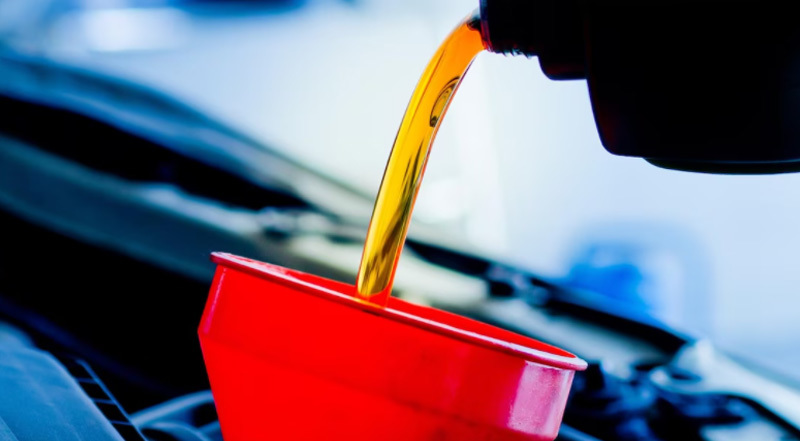
Can methanol become the primary alternative fuel for automobiles?
Release time:
2019-08-12
With the development of transportation methods in the future and the continuous announcement of new concepts and new vehicles by automobile manufacturers, electric vehicles are making steady progress. However, there are still questions about the scale of investment. To make electric vehicles mainstream, the price of batteries should be reduced, and the fear of electric vehicles should be addressed, and new charging facilities should be introduced.
With the development of transportation methods in the future and the continuous announcement of new concepts and new vehicles by automobile manufacturers, electric vehicles are making steady progress. However, there are still questions about the scale of investment. To make electric vehicles mainstream, the price of batteries should be reduced, and the fear of electric vehicles should be addressed, and new charging facilities should be introduced.
For the above reasons, many critics still hope to find a fuel that can replace gasoline and let us continue to drive our cars in the traditional way. Although ethanol has emerged as an alternative fuel (ethanol has a certain energy density and is easy to operate), Leslie Bromberg of the Massachusetts Institute of Technology Plasma Science and Fusion Research Center and Wai K Cheng of Sloan Automotive Laboratory recently suggested in a white paper that methanol is an alternative fuel for transportation that has been neglected.
Can methanol fuel succeed?
Although methanol is a large-scale industrial product, it has not become a major transport fuel. The large-scale production of methanol using natural gas and coal has been very mature and has a very economic performance record, especially the thermochemical process.
Methanol has many properties that make it very attractive for transportation. For example, methanol is a liquid, which can be easily mixed with gasoline and ethanol, and can be used in existing automobile technology at a small additional cost.
As a fuel with high octane number, methanol fuel has combustion characteristics that allow the engine to be specially designed for methanol fuel to provide the same efficiency as the leading diesel engine and match the environmental performance. Methanol is also relatively safe and can be rapidly biodegradable, and its toxicity can be comparable to gasoline.
To sum up, methanol is a greener choice than gasoline, especially methanol produced from biomass. At the same time, using natural gas to produce methanol will not produce more CO2 than traditional gasoline, and the task of reducing greenhouse gas emissions in the methanol production process is easy to achieve. Bromberg and Cheng wrote that methanol can be produced by natural gas in a very simple way, so that large-scale production, filling facilities and vehicles can be developed, and the system can be converted into renewable methanol.
How to use methanol in modern cars
The research shows that 85% of the methanol mixed fuel is the same as gasoline. In fact, some of its performance is equivalent to or even better than that of gasoline alone.
However, in this report, Bromberg and Cheng suggested that more work should be done to optimize the methanol combustion process, which is what they call "excellent".
One possibility is to use the double-tank system of direct injection alcohol engine (DIAB), because the engine is prone to knock when methanol is injected directly. This allows the use of a very high specific torque output while maintaining a low level of emissions. This also makes it possible for the spark ignition engine to work under high compression ratio, and the torque output generated is equivalent to that of a highly turbocharged clean diesel engine.
Similarly, in special alcohol engines, methanol can provide applications that are equivalent to or higher than diesel. The mixing ratio is very high, especially in 85% methanol. The cooling exhaust gas is used in the circulating device to reduce N2O emissions and reduce suction throttling.
As an alternative fuel, methanol is characterized by direct injection spark ignition of heavy-duty engines. A small, 4-liter high-power spark ignition engine driven by methanol and mixed alcohol can effectively replace even up to 11 liters of diesel fuel.
Our conclusion: methanol deserves more research
The research report of Bromberg and Cheng is not the first time to list methanol as a potential transport fuel. After investigation, methanol was first used as a formal alternative fuel after the establishment of several projects after the California oil crisis. From this point of view, methanol was introduced during the period of gasoline price decline, and there was no real economic motivation to continue these projects at that time. In terms of promotion and government stimulus plan, methanol also lags behind ethanol based on crops.
But the current economic and environmental conditions mean that the pressure to find alternative fuel methods is more urgent. In this regard, methanol has the potential to significantly reduce energy dependence and reduce the environmental impact of the transport sector.
However, obstacles to the large-scale use of methanol still exist. For example, there is not enough biomass in the United States to produce renewable methanol as an alternative to transportation fuel. On the contrary, the direct use of methanol in fuel cells means that if this technology can be commercialized in the next 20 years, methanol will play a more important role.
Now, more investigations are needed to see how methanol can be used under current conditions. Compared with other options, this is not a solution, but it is attractive and may be an important part of a combination of alternative fuels, which can maximize the emissions of transport fuels.






